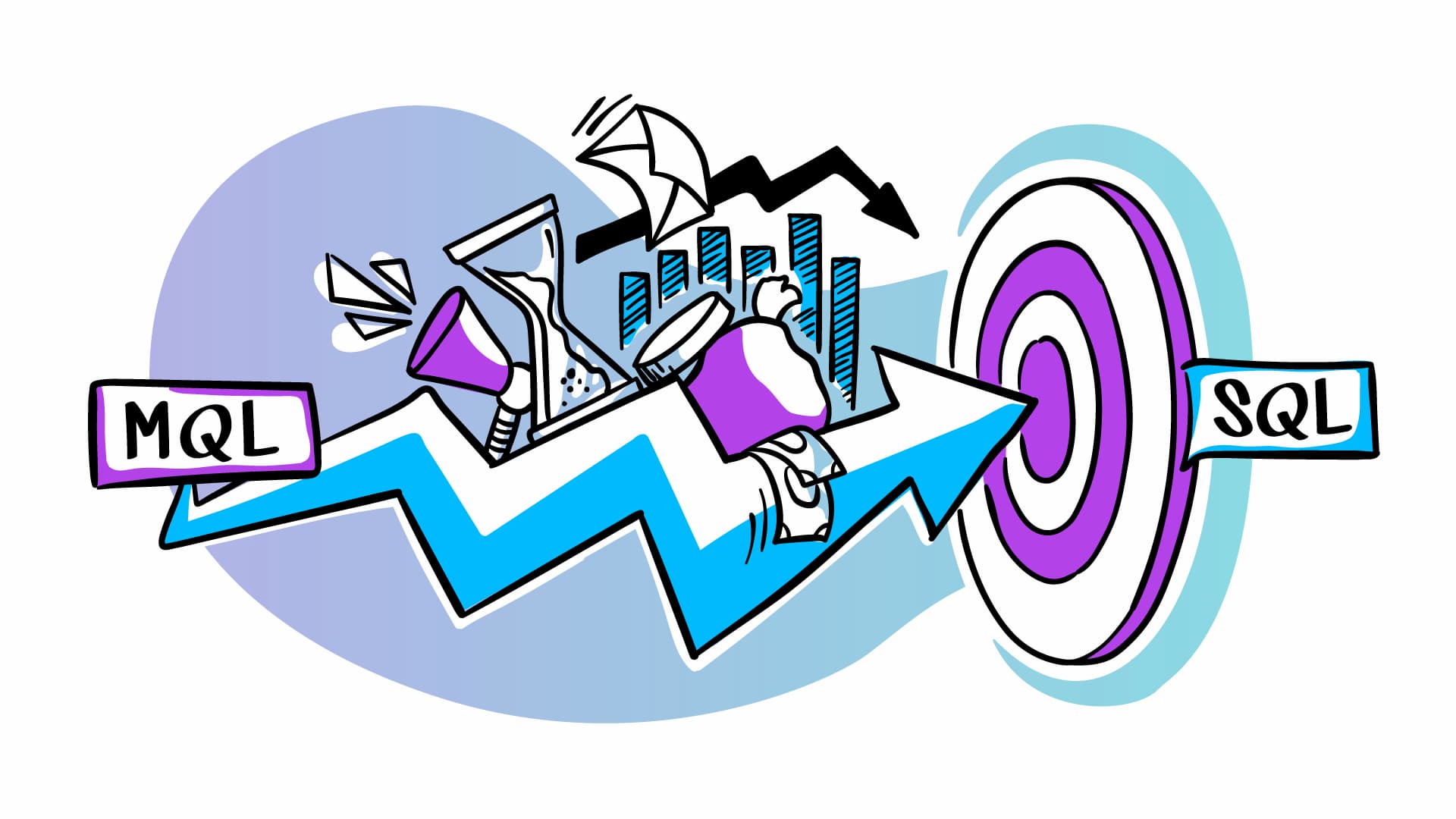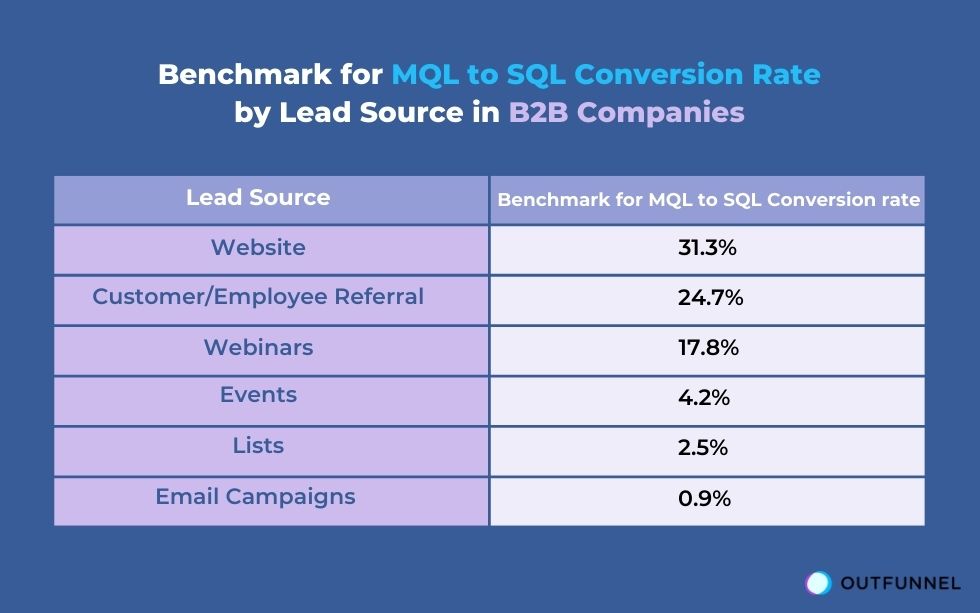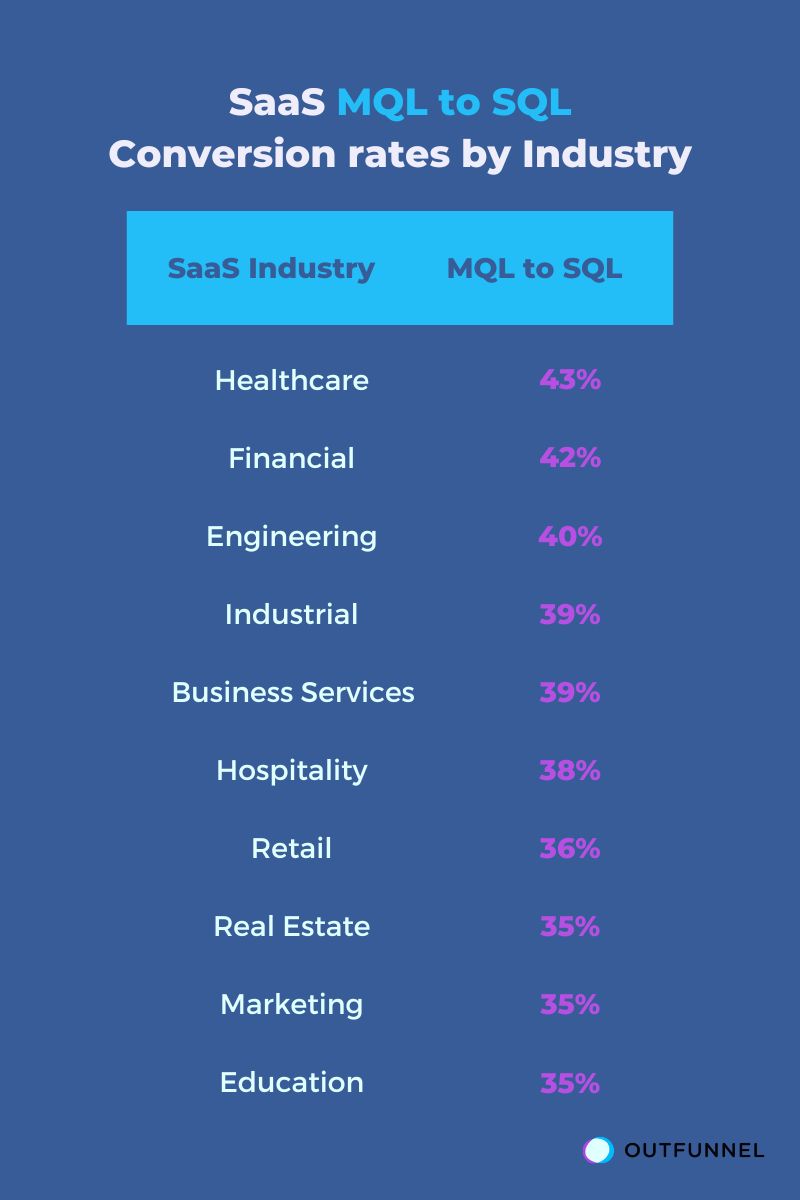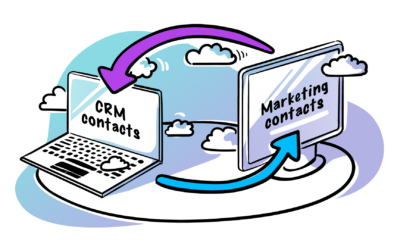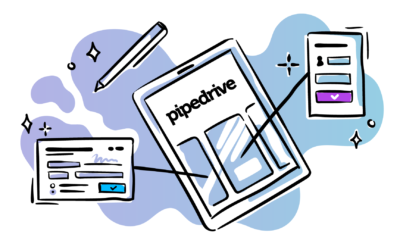Phenomenal… your sales and marketing tools are correctly integrated, and all the vital user data and events are at your fingertips.
Now, let’s explore a few MQL to SQL conversion strategies.
Sure, there’s no magic formula for converting MQLs. But you might find your buying cycle is clogged with unnecessary leads.
When your marketing process doesn’t get results, your marketers pull leads in from everywhere, and you waste sales’ valuable time.
Este Pretorious, LinkedIn lead generation specialist
What is an MQL to SQL conversion rate?
MQL to SQL conversion rate is a sales metric representing the percentage of marketing-qualified leads that successfully transition into qualified sales leads. It’s a great metric for measuring how well the marketing team is qualifying the leads.
Learn more about MQL vs SQL here.
Why should you track MQL to SQL conversion rate?
Tracking MQL to SQL conversion rate gives you an overview of how well the marketing team is doing. This can help you optimize your marketing strategies to ensure you get a good return on investment.
Your MQL to SQL conversion rate also shows how well are your sales and marketing aligned. In the 2022 Revenue Marketing Report, a majority of the respondents (58%) expressed that their sales and marketing alignment was rated as poor, fair, or good, rather than very good or excellent. Additionally, only 42% of marketers felt that their teams collaborated effectively between sales and marketing.
How to calculate MQL to SQL Conversion Rate?
To calculate the MQL to SQL conversion rate, divide the total number of sales-qualified leads by the total number of marketing-qualified leads and multiply it by 100.
MQL to SQL conversion rate = (# of SQLs / # of MQLs) x 100
For example, if you have 200 marketing-qualified leads and 70 sales-qualified leads, your MQL to SQL conversion rate would be (70/200) x100 = 35%.
What is a good conversion rate from MQL to SQL?
The recommended benchmark for MQL to SQL conversion rate is approximately 13%. This indicates that for every 100 Marketing Qualified Leads (MQLs) generated through a marketing campaign, the goal is to have at least 13 of them successfully convert into Sales Qualified Leads (SQLs).
According to Implisit, the highest benchmark (31.3%) for MQL to SQL conversion rate comes from website leads and the average conversion rate from SQL to customer is only 6%.
How to set a benchmark for MQL to SQL conversion rate?
- Determine your current MQL to SQL conversion rate and compare it with the past.
- Analyze your sales funnel to identify areas for improvement.
- Set a realistic and achievable benchmark based on industry standards (image below) and your company’s goals.
- Continuously monitor and adjust your benchmark as necessary to ensure optimal performance.
What factors affect MQL to SQL conversion rate?
- Lead qualification: Marketing can’t be too generous with sending leads to the sales funnel because if only every 50th lead becomes a customer, it means that leads haven’t been qualified correctly.
- Lead scoring: Implementing a lead scoring system allows you to prioritize leads based on their level of engagement and fit with your target criteria. By assigning points to different lead attributes and behaviors, you can identify the most promising MQLs to focus your sales efforts on.
- Alignment between marketing and sales: Effective communication and collaboration between the marketing and sales teams are essential. Both teams should have a clear understanding of the target audience, messaging, and goals to ensure a smooth handover of leads from marketing to sales.
- Lead Nurturing: Not all MQLs are ready to become SQLs immediately. Lead nurturing strategies that involve targeted and personalized communication can help build relationships, educate leads, address their pain points, and gradually move them through the buyer’s journey. Effective nurturing can increase the chances of MQLs eventually becoming SQLs.
- Content Relevance and Personalization: Delivering relevant content that aligns with the needs and interests of MQLs can significantly impact conversion rates. Personalized messaging, tailored offers, and addressing specific pain points can create a stronger connection with the leads and increase the likelihood of conversion.
- Timing and Sales Follow-up: The timing and speed of sales follow-up on MQLs can make a significant difference. Prompt and timely response to MQLs and consistent and effective sales engagement can nurture the lead’s interest and move them closer to becoming an SQL.
- Market Conditions and Competitive Landscape: External factors, such as market conditions and competition, can influence conversion rates. For example, changes in the industry, economic factors, or the emergence of new competitors can impact the conversion rates from MQLs to SQLs.
It’s important to note that these factors can vary depending on the industry, target market, and specific business context. Regular monitoring, analysis, and optimization of these factors can help improve the MQL to SQL conversion rate over time.
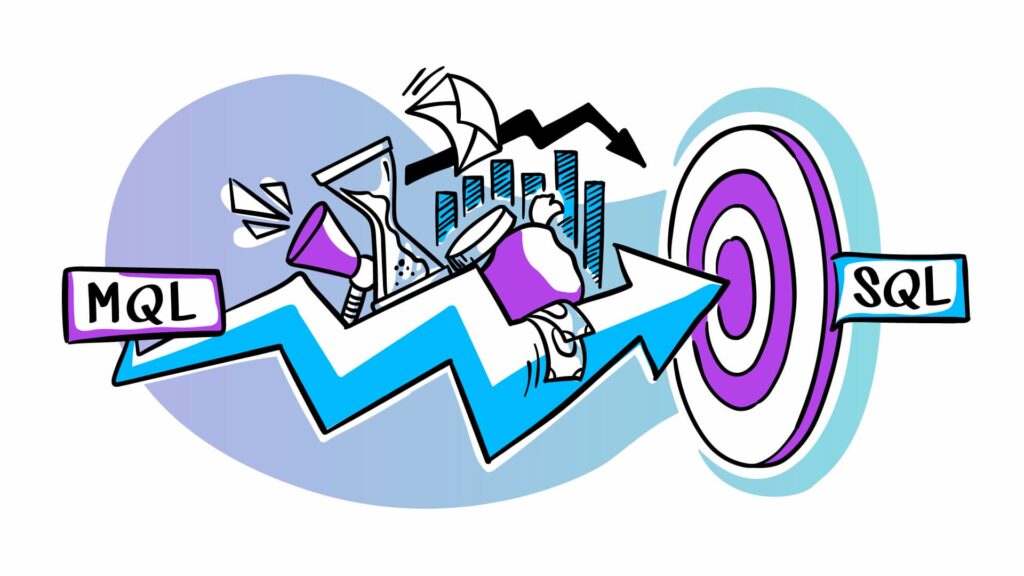
How to boost your MQL to SQL conversions?
You’re trapped sending out countless marketing messages to investigate and convince yourself this segment is part of your potential buyer bracket. All while pumping the relevant content to your iffy email list.
In this case, your marketing channels engage the wrong leads, and your sales efforts could be more balanced.
On a more positive note, remember that bad leads aren’t a complete waste of time. You’ll know the critical differentiators between potential buyers and poor fits and can better hone your ideal buyer persona.
1. Isolate what causes your poor MQL to SQL conversion rate
This first step involves a fair amount of detective work. You might have to dig deep into your funnel and smoother over the hiccups.
Take a long, good, hard look at your product, price, and the general quality of your leads, and ask:
- Is my product actually relevant to our leads?
- Are my marketers and sales reps presenting the right features and solutions for specific lead pain points and needs?
- Are my current price points out of my MQLs’ range?
- Or, are my teams qualifying the wrong lead type, to begin with?
We know this process might cause several headaches. It’s all worth it when the blocks in your funnel are removed, and the conversion process flows smoothly.
This is also a perfect opportunity to improve your product by locating and tweaking features that are potential lead pleasers.
Finally, review your previous campaigns and their strengths and conversion KPIs.
Remember that the MQL to SQL conversion process takes time. A fresh marketing campaign could take months to generate SQLs.
2. Analyze what’s working with your existing customers
Now that you’ve stopped wasting your time, energy, and special offers on the wrong marketing tactic, let’s take a closer look at which inbound leads converted.
Zoom in on a previous customer journey and examine which marketing material and funnel content impacted the buying process.
Just don’t get too authoritative on your customer lifecycle. Customer feedback is the best way to understand your current customer segments.
Your customer success team is another superb feedback resource. Beyond upselling, these customer specialists can get in-depth information and report which features and services are your top crowd-pleasers.
3. Align your sales and marketing teams
It’s time to unite your teams to make them more powerful. Here are three tactical ways from Carrie Shaw at Copper to foster sales and marketing alignment. By implementing these tactical actions, sales and marketing teams can increase MQL to SQL conversion rate, enhance their collaboration, align their strategies, and work towards mutual success.
- Weekly pipeline review with sales and marketing leadership: Conduct a regular pipeline review with sales and marketing leaders, analyzing the funnel from top to bottom. This includes assessing MQLs, opportunities, pipeline generation, sales execution, and ongoing initiatives aimed at enhancing marketing and sales alignment. By discussing progress, challenges, and new strategies, both teams can align their efforts and work towards shared goals.
- Win/loss reviews with full sales and marketing teams: Organize win/loss reviews where sales representatives share their top three wins and losses. With the full sales and marketing teams present, everyone gains valuable insights into successful and unsuccessful deals, customer use cases, and effective strategies. These reviews can be scheduled on a monthly, quarterly, or periodic basis depending on the transaction volume. This collaborative discussion helps both teams understand what works, what doesn’t, and how to improve future outcomes.
- Sales and marketing buddy system with an open-ended mandate: Implement a buddy system where a salesperson and a marketer are paired together and given the mandate to improve sales and marketing collectively. Without strict guidelines, they collaborate to address specific challenges and find solutions. By focusing on a particular aspect of the sales funnel, such as competitive intelligence or objection handling, the duo gains a deeper understanding of customer needs and develops targeted strategies. It’s important to define a reasonable scope for the project to ensure it remains manageable and impactful.
4. Take advantage of proper lead scoring and qualification
If you already have lead scoring set up, it’s still worth checking and improving. Lead scoring involves assigning numerical values to leads based on specific criteria, such as demographics, behavior, and engagement. By evaluating these factors, marketing teams can prioritize and identify leads with a higher likelihood of conversion.
Lead qualification further refines the process by assessing the readiness and fit of leads for the sales team. This involves considering buying intent, budget, authority, and need.
By focusing on high-scoring and well-qualified leads, sales teams can prioritize their efforts and allocate resources effectively, leading to higher conversion rates and more successful SQLs.
5. Share your customer success stories with leads
This next point is critical. Customer success stories and testimonials are one of the most crucial things leads look for during the buying journey.
Few people will even ask for product demos before being considered a sales-qualified lead.
According to The Conversation Index Volume 8 from Bazaarvoice, customer success stories will:
- Boost your conversion rate by 58%
- Increase your revenue per website visit by 62%
So, add a healthy serving of happy customer testimonials to your sales enablement assets. Both marketing and sales leads will be more likely to engage, knowing big names in their industry are your customers.
Lead your leads, not the other way around
Lead qualification, nurturing, and the ensuing sales pipeline all combine into a rigorous, unending journey.
If you plan on adding paths to this journey by testing new channels, you can expect this process to become all the more demanding.
You must ensure your sales and marketing teams cooperate. There’s so much more to passing leads from marketing to sales.
You can have the most impressive ICP in the world. But if the people responsible for its employment can’t agree on what it means to them, your quintessential customer will keep getting away.
Speaking of ICPs, remember that it’s not a static standard.
Every fresh account you land brings something new to the table, from pain points to customer success potentials. Your sales and marketing alignment must always be flexible and adaptable.
The only thing that should be given is a healthy relationship between your marketers and the sales team. Everything depends on their mutual trust, respect, and synergy.
Start scoring your leads and increase led-to-win conversion rates by 25%
Deep integrations with CRMs like Pipedrive, HubSpot, Copper, Salesforce

